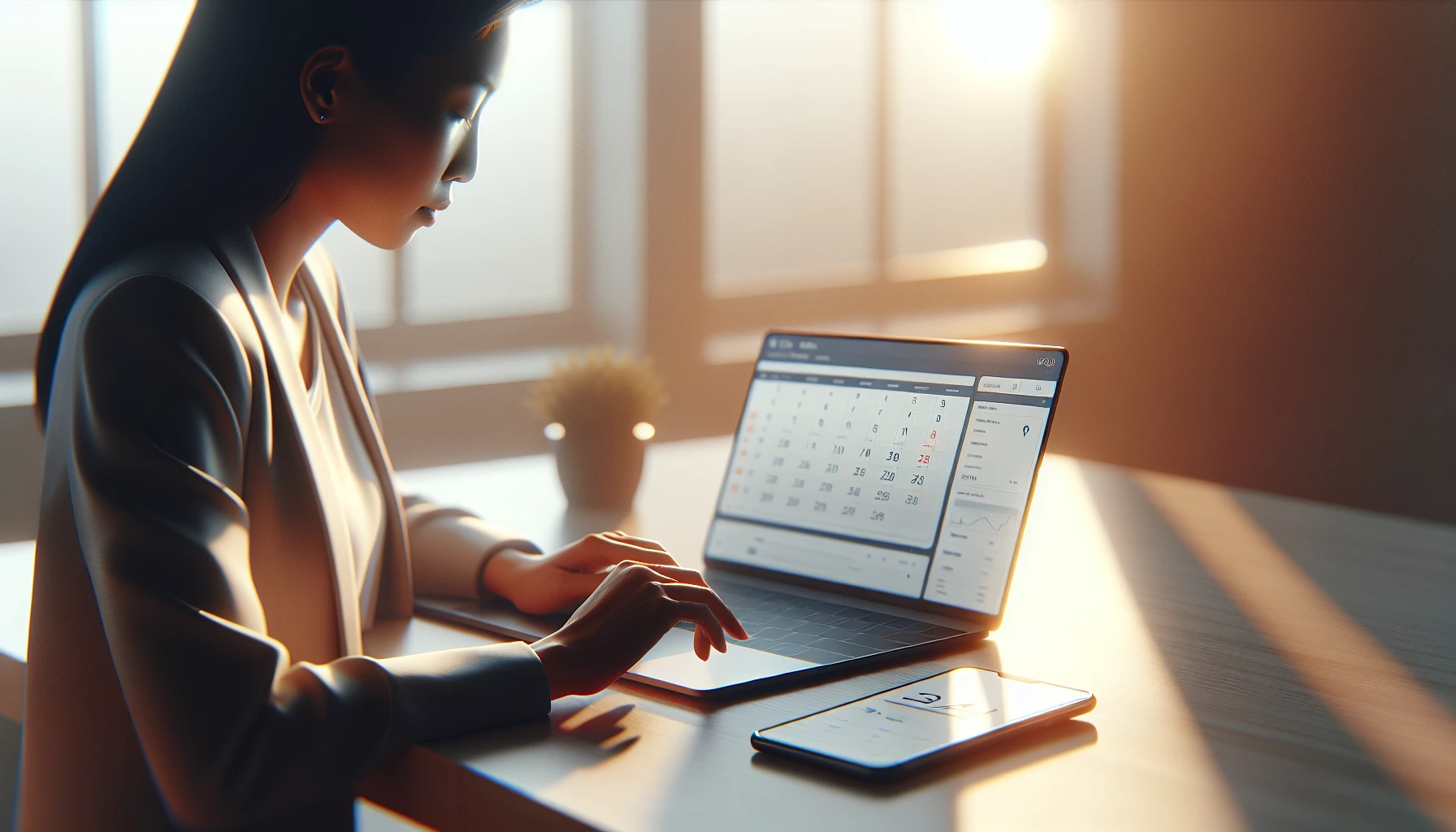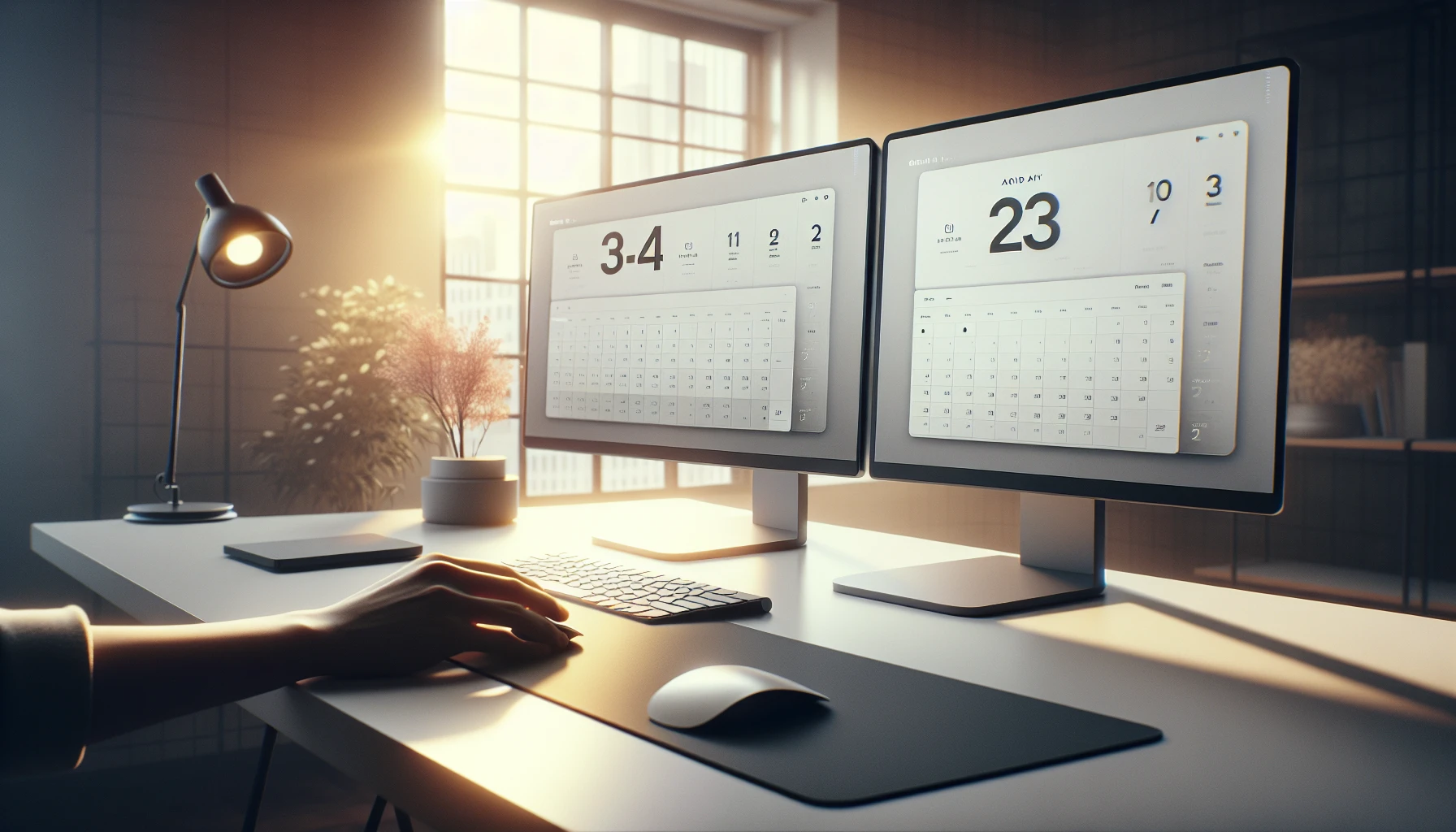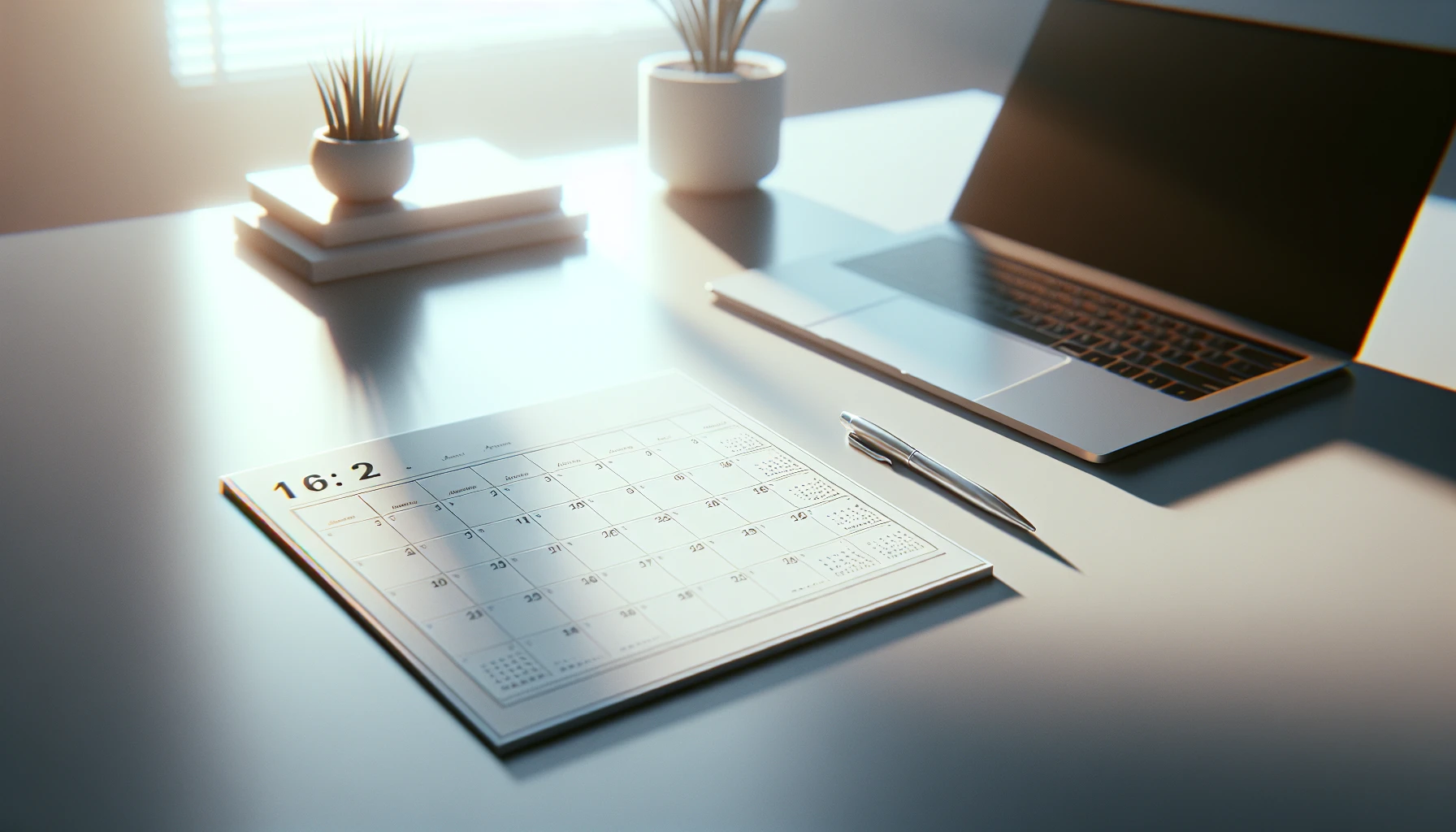· Ricardo Batista · 14 min read
How to Share Google Calendar on iPhone - easy syncing guide
Share your Google Calendar on your iPhone with simple steps, mixing Apple and Google touches to get events synced, no hassle sometimes.

I’m excited to dive into how to share your Google Calendar on your iPhone with easy steps and helpful tools. This article will let you explore simple methods to sync your calendar events well and even fix minor issues that might pop up. You will find guides from Apple and Google and some extra cool tips to try out.
Key Takeaways
- You can easily share your Google Calendar on your iPhone by syncing it with your account settings and checking the sync options
- Multiple Google Calendars can be merged in one view so you never miss any events
- Notifications and reminders can be set up on your iPhone to alert you on time for appointments or meetings
- Our tools, like Meeting Reminders, show off our skill by automatically pinging attendees who arrive late to your meetings
- Always double-check your internet connection and account settings if syncing issues pop up occasionally, ensuring a smoother calendar experience
How to Share Google Calendar on iPhone
Sharing your Google Calendar on an iPhone isn’t as complicated as it sounds. With a little bit of patience and the right instructions, you can integrate your calendar with Apple’s native Calendar app and enjoy the flexibility of managing events and meeting reminders from your mobile device. This guide walks you through the step-by-step process of setting up sharing using Google Calendar and Apple Calendar integration, along with advice and troubleshooting tips from Apple Support and Google Workspace.
Setting Up Sharing Using Google Calendar and Apple Calendar Integration
To begin, you’ll need to ensure your Google account is already synced on your iPhone. Follow these steps to get started:
- Open the Settings app on your iPhone
- Tap on Passwords and Accounts
- Select Add Account and choose Google
- Enter your Google credentials and sign in
After completing these steps, your iPhone should fetch your Google data and sync your calendars automatically. If you want to share your calendar with others or change sharing permissions, follow these steps:
- Visit Google Calendar on your computer (sharing settings can be hard to manage directly through the mobile app)
- Find the calendar you want to share under “My calendars” on the left side
- Click the three-dot icon next to the calendar name, then choose Settings and sharing
- Under “Share with specific people,” enter the email address with whom you want to share your calendar
- Adjust the permission level as needed (view-only, make changes, etc.)
- Save your changes
Once you set up sharing on the desktop, your settings will reflect across all devices, including your iPhone. It is important to note that any changes in sharing permissions on the Google side take a while to update on Apple Calendar, so it might require a refresh or re-sync occasionally.
Tips from Apple Support and Google Workspace
Apple Support suggests that ensuring your iOS is updated to the latest version is crucial for smooth integration between Google and Apple calendars. Similarly, Google Workspace emphasizes the importance of having the correct sync settings. Here are some tips from both guides:
- Confirm that the “Calendars” toggle is enabled for the Google account in the iPhone’s Mail Settings.
- If you experience delays, try toggling the calendar off and then back on.
- Use a dedicated calendar integration service if you experience recurring issues.
Using simple troubleshooting methods like manually refreshing the Calendar app by pulling down the interface and confirming network connectivity is key. Often, minor glitches resolve with a quick restart of the app or device.
Troubleshooting Sync Issues and Advanced Custom Settings
Sometimes, despite following the steps precisely, you might run into sync issues between Google Calendar and Apple Calendar. Many iPhone users have reported delays and missing events, which can be addressed using a few workarounds.
Using Clean Email and IFTTT for Settings and Workarounds
For users who are a bit more tech-savvy and looking for advanced customizations, services like Clean Email and IFTTT can help. These tools offer additional custom settings to automate tasks or improve the accuracy of your sync.
- With Clean Email, you can manage and streamline your emails, ensuring that calendar invites and updates don’t get lost in the noise. These tools might indirectly improve event updates if you rely heavily on calendar invites.
- IFTTT offers automation that can cover sync issues by triggering updates or sending alerts when certain conditions are met. For instance, if your calendar event gets updated, IFTTT can automatically ping your phone and send you a notification.
Try out these workarounds by creating simple “recipes” or automations that suit your schedule. When setting up IFTTT recipes, you might consider triggers such as:
- When a new event is added to a specific Google Calendar, then send a push notification on your iPhone
- When an event is updated, then automatically resync your Apple Calendar app
By bridging these services with your calendar, you can create a more robust environment that minimizes manual refreshes and sync issues.
Quick Sync Fixes
If you experience persistent problems, consider these quick fixes:
- Remove and re-add your Google account on your iPhone
- Clear any cache or temporary files associated with the Calendar app
- Ensure you have a reliable internet connection at the time of sync
It might also help to check if other Google services are syncing correctly. If other data, like Gmail, is coming through without delay, then the problem is likely isolated to the Calendar integration.
Managing Notifications and Event Settings
Setting up notifications correctly is key to ensuring you never miss an important meeting or appointment—especially when it comes to reminders that automatically ping attendees who join late.
Meeting Reminders That Ping Late Attendees
Some calendar tools, along with native integrations, now allow you to set up custom meeting reminders. For instance, you can configure notifications to automatically ping attendees if they join a meeting late. Although this feature might not be natively available in basic Google Calendar settings, there are workarounds:
- Use third-party calendar add-ons that integrate with your Google Calendar to monitor meeting start times and participant join times.
- Create an automation workflow that monitors your meeting schedule and sends out a nudge when attendees have not logged in within a specified time frame.
- For those using Google Meets, consider combining these calendar features with integrated meeting tools to ensure that late arrivals are automatically reminded. You might find a useful guide on automated meeting features such as How to Record On Google Meets and How to Use Google Meets if you need integration ideas. If you need to schedule meetings, check out our meeting scheduler.
Fine-Tuning Alert Preferences
The default notifications in Apple Calendar can be limited. Adjust these settings for more personalized alerts:
- Open the Apple Calendar app
- Tap on “Calendars” at the bottom of the screen
- Tap the info icon (i) next to the calendar you wish to adjust
- Scroll to find alert settings where you can customize when and how you’re reminded of appointments
Having the flexibility to match your typical workflow is important. For example, set a rule where your reminder apps notify you ten minutes before a meeting begins and then again five minutes into it, ensuring that late joiners get the prompt if they join after the meeting has started.
Community Insights on Event Management
Users on community blogs and Stack Exchange have shared multiple tips on managing notifications effectively. According to these sources, many users have found that:
- A combination of multiple short alerts can help keep you consistently updated.
- Custom notifications across different time zones sometimes require manual fine-tuning.
- Conditional notifications, like automatically pinging latecomers, are best tested out with a small group first to ensure everyone is comfortable with the setup.
Sometimes, verifying if your notification settings are overriding each other in system settings (for both iOS and the Google app) often helps streamline this process.
Exploring Alternative Calendar Apps
If you’re open to trying something different than the default Apple Calendar, there are other apps available that might offer the features you need, especially when it comes to mixing and matching reminders and controlled access.
Calendars by Readdle
One notable alternative is Calendars by Readdle. This app combines the simplicity of Apple’s calendar with a range of customized features that might be missing in the default apps. The customization offered by Calendars by Readdle might include options such as:
- Easily switching between multiple calendar accounts, including Google Calendar and other sources
- More robust notification management that supports multiple reminder triggers
- Enhanced visual layouts and streamlined scheduling features that integrate well with meeting applications
Describe in your mind the value of a tool like Calendars by Readdle if you frequently set up group meetings or need to ensure that attendees receive timely reminders. This can be especially handy if your workflow relies on ensuring that all meeting invites and reminders are handled automatically, including notifications for those who join late. In environments where you rely on automation, using an app that supports robust third-party integrations might save a lot of time.
Other Notable Apps and Tools
While Calendars by Readdle is popular, other alternatives include:
- Microsoft Outlook Calendar: Good for users who are entrenched in the Microsoft ecosystem.
- Fantastical: Known for its intuitive design and robust integration with natural language processing for date entry.
- Google’s own mobile app, which, despite some limitations, ensures that all updates on the desktop mirror directly on your phone.
Each of these alternatives comes with its own set of custom settings. Some even provide advanced scheduling features that allow meeting organizers to set multiple reminders or automate notifications for meeting attendees. This can be helpful when it comes to sending automatic pings to those who join meetings late, a feature that many users have found beneficial in keeping meetings on track.
Advanced Customization and Sync Workarounds
There are a few hidden settings and workflows that power users can adopt to get the most out of their calendar integration. When managing multiple calendars across platforms, consider:
- Manually adjusting refresh intervals: In some cases, you can tweak settings in your phone’s calendar app to fetch data at shorter intervals.
- Creating dummy events: Set a repeating event that forces a sync update. Although this might seem like a hack, many users have reported that such methods can push the system to re-sync faster.
- Using a combination of IFTTT and native notifications: Create a trigger that when an event reaches the halfway point of its start time without its attendees joining, a reminder gets sent out automatically. This might require some trial and error, but numerous online guides are available to help set up these recipes effectively.
Tips for Maintaining Sync Integrity
- Regularly sign out and sign back into your Google account on your iPhone.
- Monitor app update releases for both iOS and the Google Calendar app. Sometimes a bug fix or improvement in newer releases can resolve sync issues without manual intervention.
- Check with community forums like Stack Exchange or specialized blogs where experienced users share their sync troubleshooting routines.
Combining Meeting Reminders with Calendar Sharing
One of the more dynamic advantages of sharing Google Calendar on the iPhone is the capacity to set up custom meeting reminders. This setup not only allows you to manage your schedule but can also automatically engage meeting participants who are running late. If an attendee joins a meeting late, having pre-set notifications can serve as a gentle reminder or nudge, ensuring that your meeting starts on the right foot.
- Create a meeting on Google Calendar and add all the relevant participants
- In the event details, include a note on the meeting policy (for instance, that late arrivals will be gently pinged)
- Configure notifications both on Google Calendar and your primary calendar app to ensure that reminders are sent out at the right times
This feature is particularly useful in collaborative environments where punctuality is important. Some meeting organizers even add a brief automatic message as a reminder to attendees if they are late—a feature that can be built using custom IFTTT recipes or integrated with other automation tools. While not directly available out of the box, these methods often save time and ensure everyone stays on schedule.
Integrating custom meeting reminders with calendar sharing not only helps keep you organized but also reinforces meeting etiquette. If you’re interested in learning more about integrating different meeting tools, you might explore additional resources on automated meeting tools like How To Share Screen On Google Meets.
Organizing your calendar efficiently minimizes confusion, supports better time management, and keeps all participants aware of upcoming events and any related actions, such as automated pings for late joiners. Read more about staff meeting reminder strategies.
Final Thoughts on Calendar Sharing and Meeting Automation
While setting up and sharing your Google Calendar on an iPhone might require some initial work, the long-term benefits are considerable. You streamline your scheduling process and, with the added twist of automated meeting reminders, you ensure that meetings are more punctual. By following the outlined steps and utilizing trusted external tools like Clean Email and IFTTT, you can tailor your calendar settings to fit your unique needs.
Remember that integrating different platforms and apps may require periodic adjustments, so keep an eye on updates from Apple Support, Google Workspace, and the developers of third-party tools. Whether you choose to stick with the native Apple Calendar, switch to a third-party like Calendars by Readdle, or create custom automation with IFTTT, you have plenty of options to design a calendar experience that supports your busy life.
Take time to experiment with various settings and workflows; this not only improves your productivity but also ensures that your schedule remains in sync across multiple devices. With careful tweaks and use of proven resources, managing meeting reminders and calendar sharing becomes a seamless part of your daily routine.
Conclusion
To wrap things up, we’ve covered a lot about syncing your Google Calendar on your iPhone in a way that’s easy to understand and follow. We’ve seen how to use both the Google and Apple settings to manage your events, and how to troubleshoot issues if things go awry. The main takeaways are making sure your calendar settings are correctly adjusted, learning the simple steps to share your calendar, and understanding how timely notifications can keep your schedule smooth. It’s all about being ready so you don’t miss important meetings or appointments.
Remember that a small mix of tools like those mentioned can go a long way in keeping everything in line. And if you ever need more help, there’s always Meeting Reminders ready to ping the attendees that come in late to your meetings. This service is your next step in ensuring that your meeting schedule stays on point, making your day just a little bit easier and ensuring you never fall behind.
Related Posts
Frequently Asked Questions (FAQs)
How do I share my Google Calendar on iPhone?
You simply open your Google Calendar app, tap on the three-line menu, and go to your settings then select the calendar you want to share. From there, you can manage sharing options and sync with your iPhone calendar. It’s pretty easy and works great once you set it up.
Can I sync multiple Google Calendars on my iPhone?
Yes, you can add several Google Calendars to your iPhone. Just sign in to each account in your calendar settings and toggle the calendars you want to show. This helps you keep all your events in one place without any hassle.
How do I adjust notifications for my shared Google Calendar on iPhone?
After you share your calendar, head to your iPhone’s settings and then Calendar settings. From there, you can customize notifications and reminders so you don’t miss important events. Simple steps ensure you stay on top of things.
What should I do if my Google Calendar isn’t syncing on my iPhone?
First, check your internet connection and sign out then sign back in to your Google account on your phone. Also, go to your iPhone’s account settings to confirm that calendar syncing is enabled. If it still doesn’t work, try rebooting your device or checking for any pending updates.
How do we automatically ping the attendees that arrive late to your meetings?
Using tools like Meeting Reminders makes it simple to automatically send alerts to latecomers. Just set up the reminder integration, and the system will ping those attendees, helping keep your meeting schedule on track. This feature showcases our expertise in making meeting management more effective and hassle-free.



